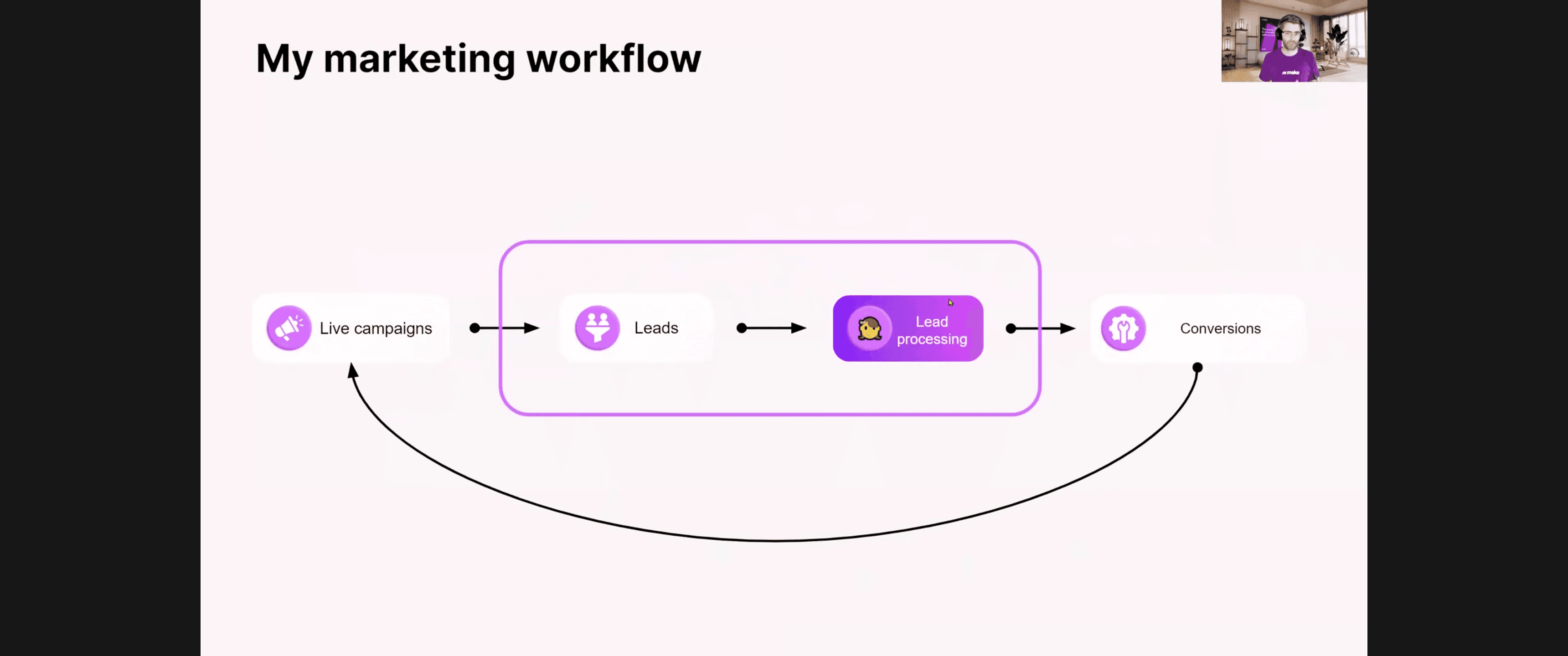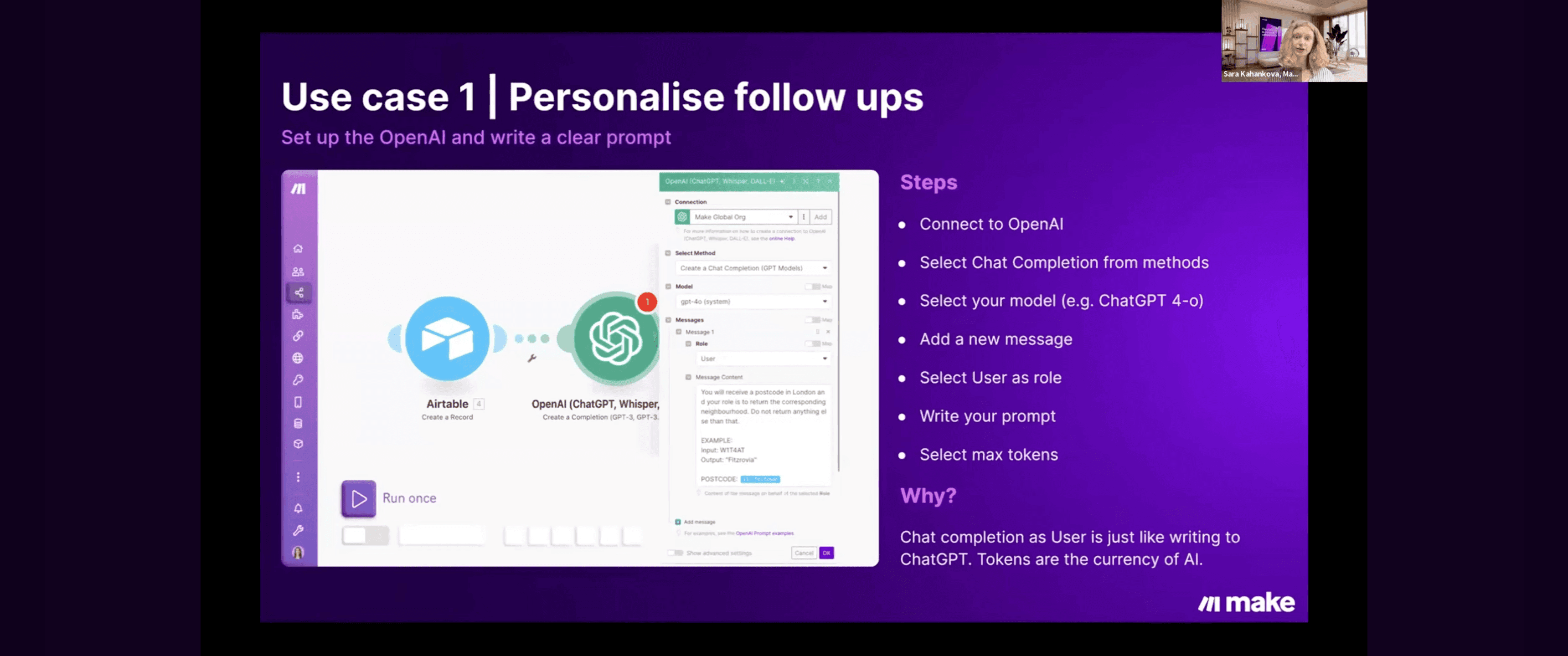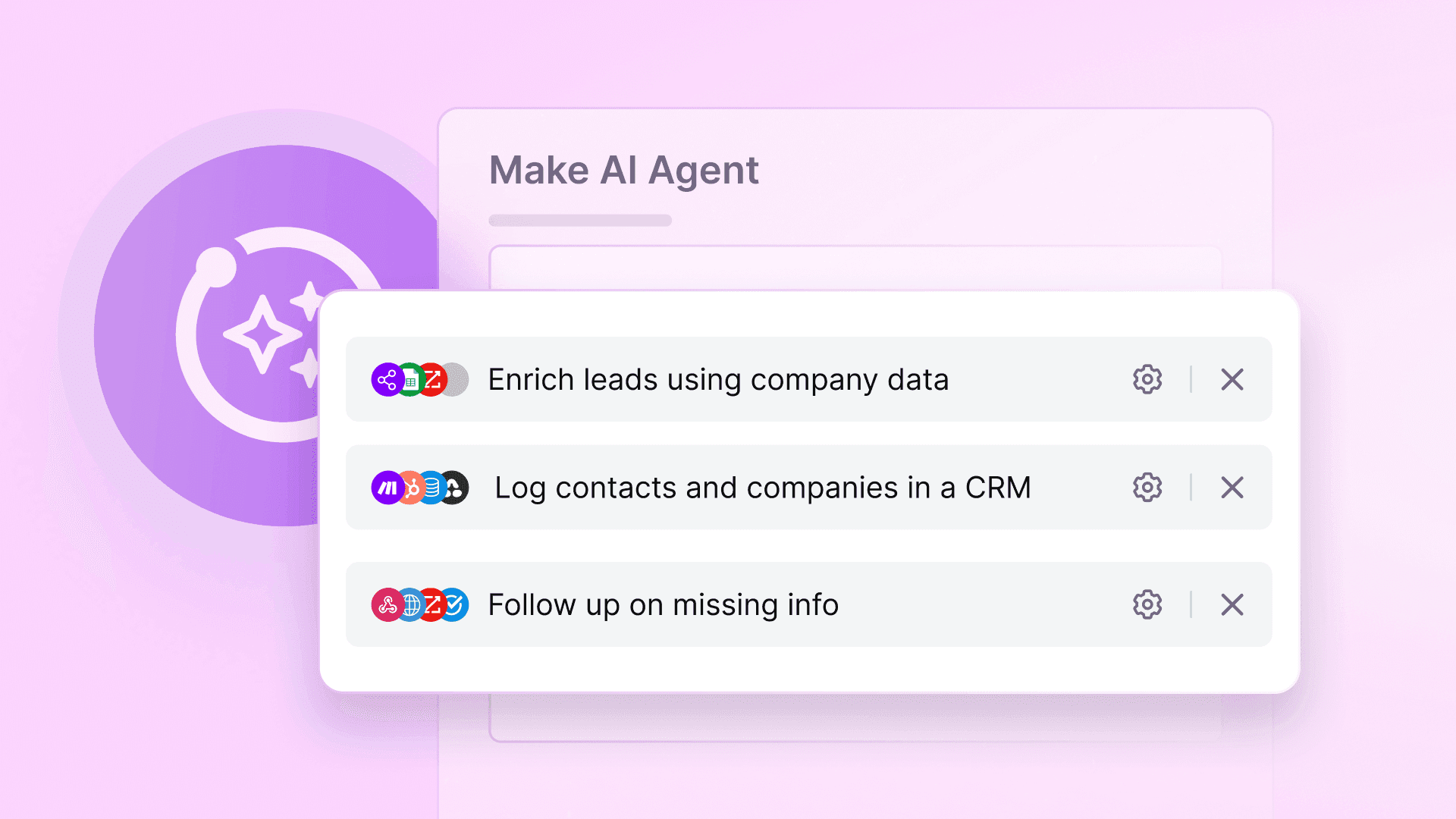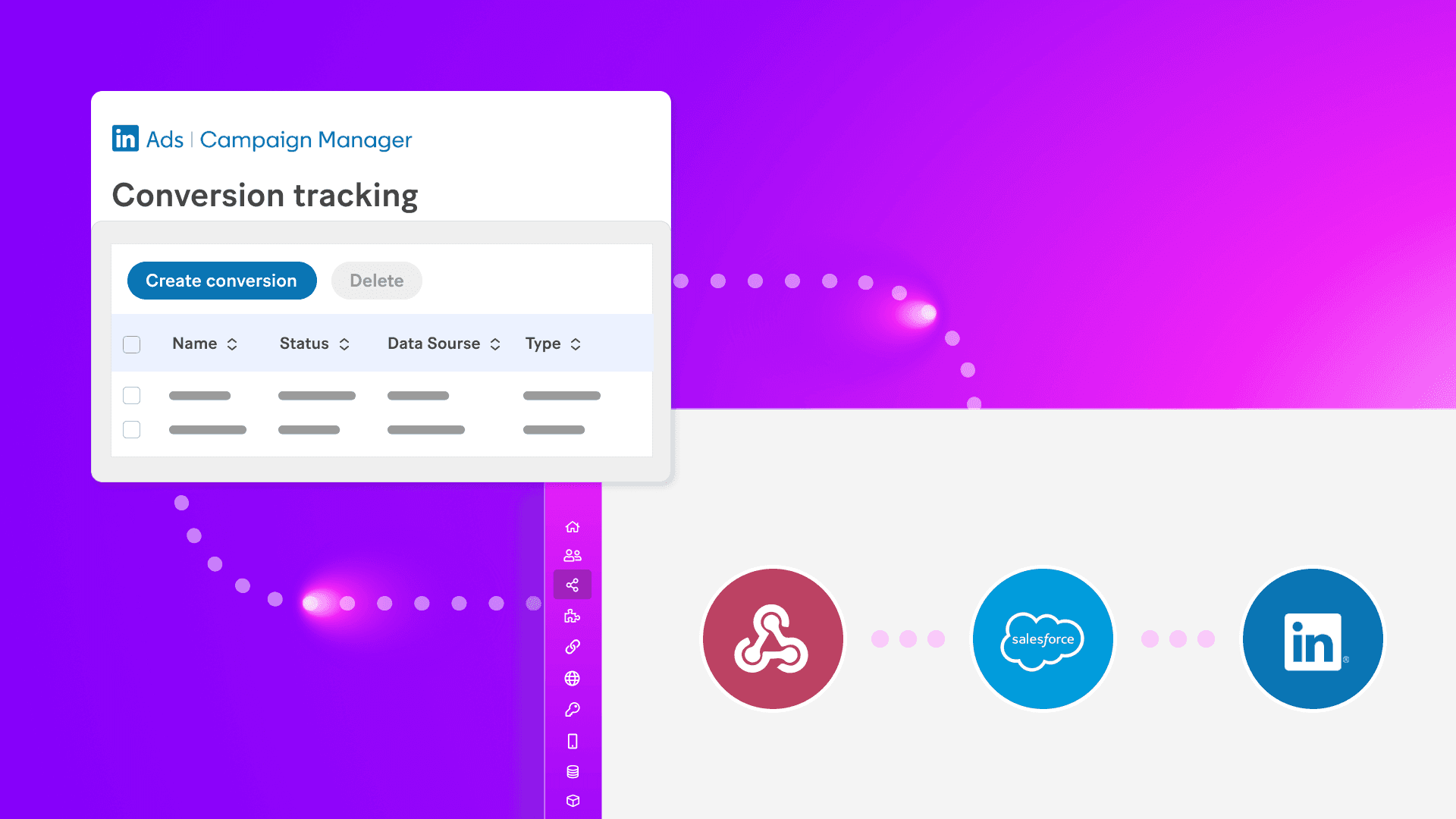May 26, 2025 | 5 minutes
How to use AI to automatically personalize your Meta marketing
Personalization is key to effective marketing communications. Matt Felser, Head of Business Engineering at Meta, shares how to capture quality Facebook and Instagram leads then make the most of those opportunities using AI.
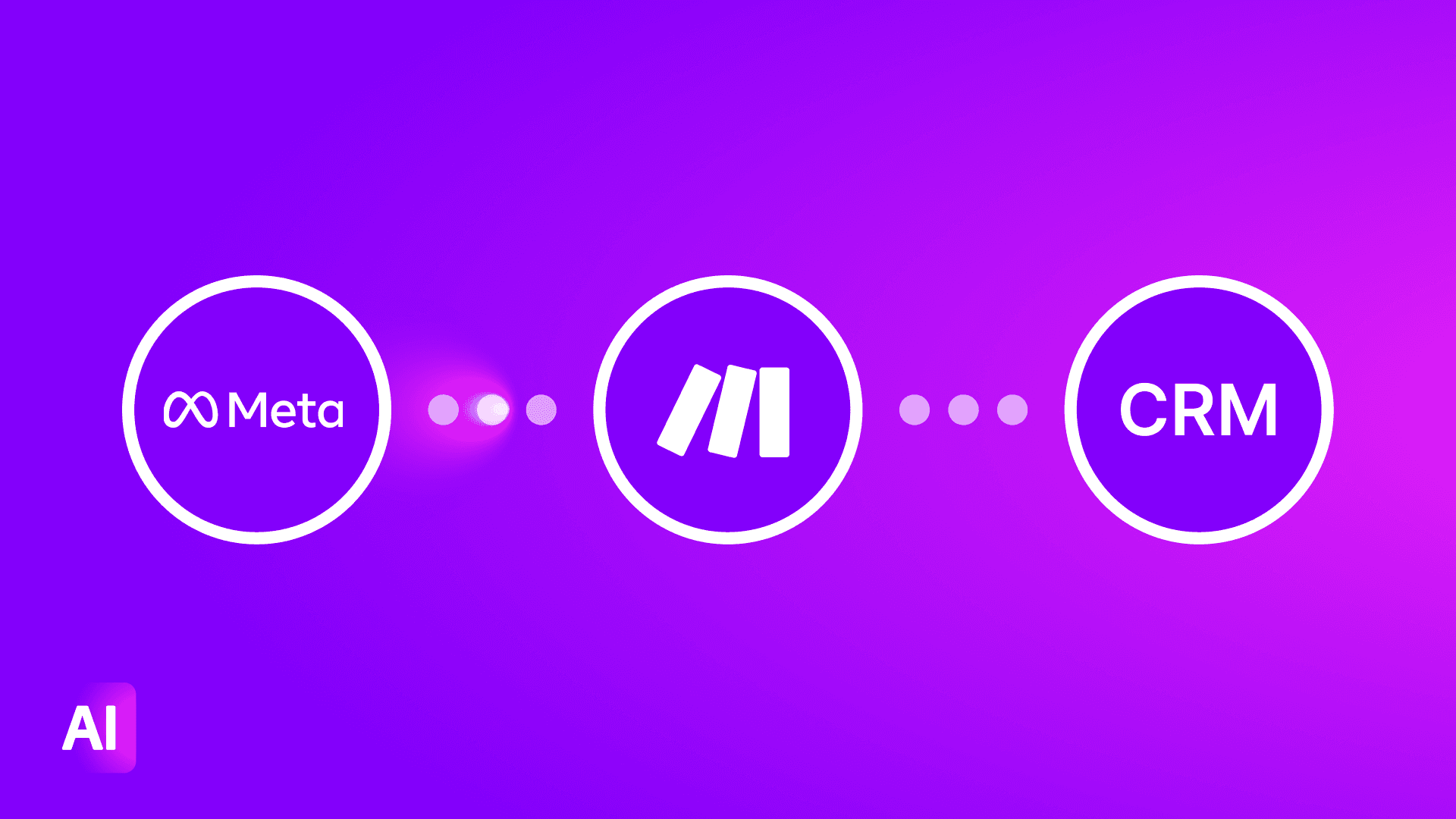
For marketing messages on Meta (or anywhere) to land with impact, genuine personalization is key. But delivering it at speed and scale has traditionally been difficult – until now. AI enables a level of responsiveness that’s impossible to achieve manually. It’s the secret to not just sending faster emails, but better emails.
In a recent webinar, Matt Felser, Head of Business Engineering at Meta, joined Sara Kahankova, AI Transformation Lead at Make, and Daniel Zrust, App Solutions Architect at Make, to talk through exactly how the combination of Make, Meta, and AI use raw lead data to send personalized responses that drive action in real time.
The problem
For brands that run lead generation campaigns on platforms like Instagram and Facebook, Meta has already set up smart features to make it easy to capture leads. For instance, Meta instant forms make it easy to capture leads, and Meta’s own AI models help deliver those forms to the right people.
But what happens after someone submits the form?
Without AI and automation, your options are to manually sort through leads and send follow-up emails, or to set up a basic autoresponder. But neither approach is ideal – especially when each lead comes at a price and there’s pressure to maximize ROAS.
As Daniel says in the webinar: “It might be too late when you follow up with a personalized message manually. With AI, you can compile a message in one minute, not one hour.”
The tools
Alongside Meta Lead Ads and the Make platform itself, this scenario uses:
OpenAI: Specifically the GPT-4o model as your researcher and data entry assistant
Anthropic Claude: Specifically the Haiku model as your digital copywriter
Gmail: To send and receive emails with your customers
Airtable: Used as a CRM
Meta’s Conversions API: For an advanced step involving feeding performance data back to Meta and improving future results
Like with most scenarios built in Make, the apps you use can be customized are interchangeable. For instance, you could swap Gmail for Mailchimp, or connect to HubSpot instead of Airtable. Browse Make’s library of apps for the tools you already use and love.
Connect anything
Make supports 2,000+ pre-built apps, including 300+ AI apps. Don't have the app you need? Make also offers the flexibility of integrating anything with an API.
The setup
To send a personalized follow-up email within seconds of receiving a Meta lead, a Make scenario with multiple connected modules is created.
The following is a summary of the steps taken. To see these steps in action with even more details, you can check out the full webinar.
1. Watch for new leads with Meta Lead Ads
The scenario begins with the Facebook Lead Ads module in Make, configured to trigger whenever a new lead is received.
It might be different for your business, but in the real estate agency example used in the webinar, the lead form contains fields like city, postcode, budget, and a free-text description box. This final field could contain a prompt for human respondents such as "Please describe your dream house". Dealing with the widely variable answers that will be received from an unstructured field like this is where AI modules will come in particularly handy.
2. Retrieve lead details
Next, a "Get lead details" module pulls all available information from Meta about the specific lead. This includes both the answers from the form and the questions themselves, which can be useful for CRM entry and creating messages.
3. Send a lead event back to Meta
Using the Conversions API, the scenario sends an event back to Meta confirming that the lead was received and establishing a feedback loop. This is important for campaign optimization because it helps Meta better understand what ‘success’ looks like, so it can target similar results going forward.
This is especially true if you opt to use ‘conversion leads’ as a performance goal.
Matt Felser from Meta shares that: “Signals enable targeting, optimization, and measurement. The more you share, the more we can learn and improve your outcomes.”
4. Store the lead in a CRM
The scenario creates a new record in Airtable (it could be any other CRM) with all the lead’s details. Fields like name, contact info, preferences, and budget are mapped for later use and tracking.
5. Convert technical data into user-friendly details
An OpenAI module is used to convert less readable fields, like a ZIP code or postcode, into neighborhood names that can be used more naturally in the message response. For example, a postcode like "SW6 1AA" becomes "Fulham".
For anyone familiar with British postcodes, matching numbers to neighborhoods isn't necessarily straightforward; tasking AI with cracking the code is a much better and less tedious use of your time. And though the output may seems small, calling neighborhoods by name is a huge leap forward in humanizing communications with potential clients.
6. Generate a personalized message with AI
A follow-up email is then generated using the Anthropic module. In the webinar, the Haiku model is used, but your preferred LLMs can also be slotted in; feel free to tinker with prompts until you get the results you want – as always with AI, good prompting is key for good output.
The AI prompt used in this scenario should include:
Context: Such as "You are a real estate agent"
The goal: For instance, "Write a short, polite follow-up recommending one property"
The lead’s data: Including budget, location, preferences
An example message for tone and style
In the webinar, Sara emphasizes the importance of writing clear prompts. She says: “Be specific. Tell it what you want to do and what you don’t want it to do. To avoid AI ‘hallucinations’, you can even say: ‘Do not make things up.’”
7. Send the email
The generated message is passed to the Gmail module, addressed to the lead using their submitted first name. The subject and message body are dynamically filled with AI output and the email address is also fetched from the data provided.
8. Update CRM status
Finally, the Airtable record is updated to reflect that the follow-up was sent. This keeps the CRM in sync and ready for further actions, like reminders or pipeline tagging.
9. Optional advanced step: Use an AI Assistant to match leads with real products or services
In the webinar, we learn how OpenAI’s Assistants feature can take personalization a step further. For the real estate example, a list of available properties is uploaded to the Assistant, which is then queried via a "message an assistant" module in Make.
Rather than churning out a generic follow-up, the Assistant matches the lead’s preferences (like budget, location, or features) with the most relevant option from the list and includes that specific recommendation in the response.
While the example used focuses on property listings, the same approach can work for products, services, events, or any structured offers.
Check it out on video 🎥
Watch the full webinar to start recreating the scenarios Meta describes above.
How AI helps
Thanks to the combination of Make, AI, and Meta, it’s possible to respond to leads in seconds with messages which are:
Written in natural language
Based on the lead’s actual responses
Adapted with a tone and details that make it feel humanThis simply wouldn’t be possible without AI in the mix.
Do more with Make and AI
Learn more about AI automation with Make here and sign up for a free account to start automating today.

